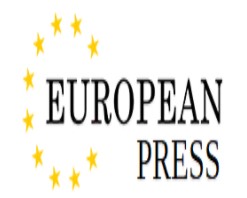Research from Japan has demonstrated the use of eye-tracking technology in the early diagnosis of autism spectrum disorder.
Waseda University associate professor Mikimasa Omori set out to examine whether children with potential ASD would exhibit a preference for predictable movement – a behaviour indicative of the neurodevelopmental disorders – longer than typically developing children.
FINDINGS
A/Prof Omori developed six pairs of 10-second videos showing predictable and unpredictable movements making geometric shapes. Each video pair was shown side-by-side in a preferential-looking paradigm to compare how study participants observe them.
These observations were then captured and analysed using an eye tracker system developed by Sweden-based company Tobii.
Findings, published in the Nature journal Scientific Reports, showed that children with possible autism “spent significantly more time observing predictable movements,” suggesting that they may develop this behaviour over time.
“Unlike the typically developing children, who did not show a shift in their observation patterns, children with potential ASD demonstrated a gradual increase in their focus on the predictable movements as the stimulus presentation progressed,” A/Prof Omori said.
According to the researcher, this repetitive behavior characteristic of autism “may be linked to difficulties in learning cause-and-effect relationships between movement trajectories and the anticipation of complete shapes.”
Meanwhile, the study also demonstrated how predictable movement stimuli can be potentially used as a behavioural marker for early ASD screening.
WHY IT MATTERS
Until this study, reasons behind children with autism spending more time observing repetitive movements and how this behaviour evolves over time were unclear. Present research has only focused on social communication deficits, such as eye contact and language delays.
A/Prof Omori’s research suggested that identifying such a behaviour can serve as an early indicator of autism in children “as young as three years old.”
It also suggested introducing a brief video observation task as part of routine developmental checkups for toddlers aged 18-36 months to help identify those at risk for ASD. A/Prof Omori’s research procedure could also be adopted for children under 18 months.
THE LARGER TREND
Over the past years, several studies and innovations have come out to advance the diagnosis of ASD worldwide.
One of them, a device that also utilised eye-tracking technology, received the 510(k) clearance of the United States Food and Drug Administration. Georgia-based EarliTec Diagnostics’ solution supports ASD diagnosis by measuring children’s focus and responsiveness while watching short videos.
California-based Cognoa also received the US FDA’s de novo clearance for its AI-powered software that analyses videos of children’s behaviour to aid in autism diagnosis.
In Australia, research at the University of Southern Queensland is developing a cloud-based system that can automatically detect autism from a single brain scan.
Meanwhile, in South Korea, Seoul National University Hospital and the National Center for Mental Health set up a living laboratory for observing and gathering data from children to discover biomarkers and develop AI models for the early diagnosis of autism.
Credit: Source link












